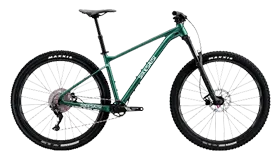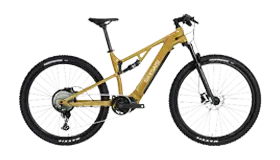Are 26-inch mountain bikes obsolete?

The 26-inch mountain bike was the standard for decades, but in recent years, there has been a shift towards 27.5-inch and 29-inch wheels. So, are 26-inch mountain bikes obsolete?
The pros and cons of 26-inch mountain bikes
There are a few advantages to 26-inch mountain bikes. They are typically lighter and more maneuverable than larger-wheeled bikes, which can be an advantage in technical terrain. They are also less expensive than 29-inch bikes, which can be a factor for budget-minded riders.
However, there are also some disadvantages to 26-inch mountain bikes. They have less rolling resistance than larger-wheeled bikes, which can make them less efficient on smooth terrain. They also have less traction than larger-wheeled bikes, which can be a disadvantage in loose terrain.
The rise of 27.5-inch and 29-inch mountain bikes
27.5-inch and 29-inch mountain bikes have become increasingly popular in recent years. They offer a number of advantages over 26-inch bikes, including:
Improved rolling resistance: Larger wheels have a larger contact patch with the ground, which reduces rolling resistance. This can make them more efficient on smooth terrain.
Improved traction: Larger wheels have more surface area, which provides more grip. This can be an advantage in loose terrain.
Increased stability: Larger wheels provide more stability, which can be an advantage for riders of all skill levels.
Are 26-inch mountain bikes obsolete?
The answer to this question depends on your individual needs and preferences. If you are looking for a lightweight, maneuverable bike for technical terrain, a 26-inch bike may be a good option for you. However, if you are looking for a bike that is efficient, has good traction, and is stable, a 27.5-inch or 29-inch bike may be a better choice.
How to choose the right mountain bike wheel size
If you are not sure what wheel size is right for you, there are a few things you can consider:
Your riding style: If you ride mostly on technical terrain, a 26-inch bike may be a good option. If you ride mostly on smooth terrain, a 27.5-inch or 29-inch bike may be a better choice.
Your riding experience: If you are a beginner, a 27.5-inch bike may be a good option for its added stability. If you are an experienced rider, you may prefer the handling of a 26-inch bike.
Your budget: 26-inch bikes are typically less expensive than larger-wheeled bikes.
26-inch mountain bikes are still a viable option for some riders, but they are no longer the standard. 27.5-inch and 29-inch bikes offer a number of advantages that make them the preferred choice for many riders.










